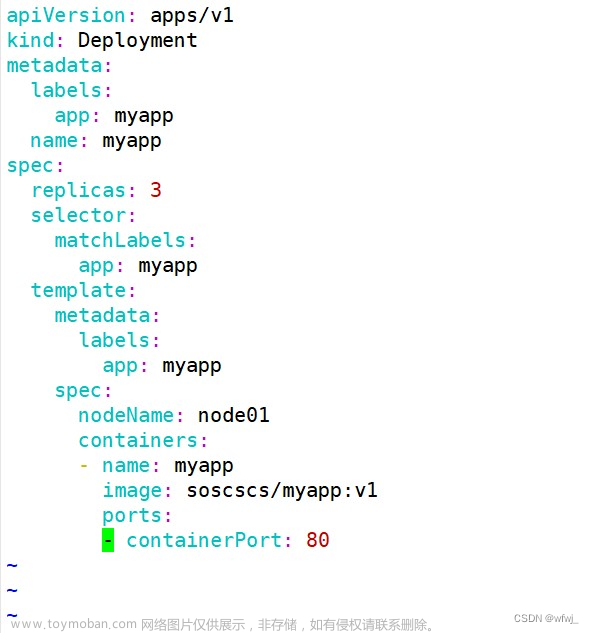默认调度和自定义调度详解
默认调度
默认调度是 Kubernetes 中的内置机制,它使用调度器组件来管理分配容器的节点。调度器依据以下原则选择合适的节点:
- 资源需求 :调度器会为每个 Pod 根据其 CPU 和内存需求选择一个具有足够资源的节点。
- 亲和性和容忍性 :通过亲和性规则和容忍性设置,可以将 Pod 调度到满足特定标签或其他 Pod 运行位置要求的节点上。
- 资源分配 :调度器会考虑节点上已运行的其他 Pod 和 Pod 的资源需求,以合理分配资源,不超出节点资源限制。
- Pod 争用优先级 :优先级高的 Pod 更容易被调度到可用节点上。
- 本地性 :调度器更倾向于将新 Pod 调度到已经运行相关服务的节点上,以减少跨节点通信的开销。
自定义调度
除了默认调度之外,Kubernetes 还允许用户进行自定义调度,以满足特定的业务需求。用户可以通过以下方式实现自定义调度:
- 调度器扩展点 :Kubernetes 支持调度器插件的机制,用户可以使用自定义的调度器插件替换默认调度器,并实现自己的调度算法。
- 亲和性和容忍性调度规则 :通过在 Pod 的调度规范中指定亲和性和容忍性规则,用户可以要求 Pod 被调度到特定的节点上。
- 节点选择器 :通过使用节点选择器标签,用户可以将一组特定的节点应用于特定类型的工作负载。
调度原理
Kubernetes 的调度器基于优先级和可行性评分算法来决定将 Pod 调度到哪个节点。调度流程如下:
- 预选阶段(Predicates) :调度器对每个节点应用预选谓词函数,检查是否满足 Pod 的资源需求、亲和性规则等。不满足条件的节点将被标记为不可调度。
- 优选阶段(Priorities) :调度器对所有可调度的节点应用优选函数,为每个节点分配优先级。优选函数根据争用优先级和伸缩策略等标准为节点打分。
- 选定阶段(Binding) :调度器选择优先级最高的节点将 Pod 调度到该节点。如果存在多个具有相同最高优先级的节点,则将应用绑定函数来决定最终调度。
On the other hand
Kubernetes is a powerful container orchestration platform that automates the deployment and management of containerized applications. An essential aspect of Kubernetes is its scheduling capability, which determines where to place containers within the cluster. In this blog, we will explore the default scheduling mechanism in Kubernetes and also understand how custom scheduling can be leveraged to meet specific business requirements.
Default Scheduling
Default scheduling is the built-in mechanism in Kubernetes that utilizes the scheduler component to manage container placement on nodes. The default scheduler follows these principles to select suitable nodes for pods:
- Resource Requirements : The scheduler matches each pod’s CPU and memory requirements with nodes having sufficient resources.
- Affinity and Tolerations : By using affinity rules and tolerations, pods can be scheduled on nodes with specific labels or meet certain requirements defined by other pods.
- Resource Allocation : The scheduler takes into account the already running pods and their resource demands on each node, ensuring fair distribution without exceeding node resource limits.
- Pod Preemption Priority : Pods with higher priority have a better chance of being scheduled on available nodes.
- Locality : The scheduler prefers to place new pods on nodes already running related services to minimize inter-node communication overhead.
Custom Scheduling
While default scheduling covers most scenarios, Kubernetes allows users to implement custom scheduling to cater to specific business needs. Custom scheduling can be achieved through the following approaches:文章来源:https://www.toymoban.com/news/detail-646575.html
- Scheduler Plugins : Kubernetes supports scheduler plugin mechanisms that enable users to replace the default scheduler with their own implementation, incorporating custom scheduling algorithms.
- Affinity and Tolerations Scheduling Rules : By specifying affinity and tolerations rules in pod scheduling specifications, users can enforce pods to be scheduled on specific nodes.
- Node Selectors : By using node selector labels, users can apply a specific set of nodes for specific types of workloads.
Scheduling Principles
The Kubernetes scheduler utilizes priority and feasibility scoring algorithms to determine which node a pod should be scheduled on. The scheduling process includes the following stages:文章来源地址https://www.toymoban.com/news/detail-646575.html
- Predicates Stage : The scheduler applies predicate functions to each node to evaluate if pods meet resource requirements, affinity rules, and other conditions. Nodes that fail the predicates are marked as not scheduling candidates.
- Priorities Stage : The scheduler assigns priority scores to all nodes based on various criteria such as contention, autoscaling policies, etc.
- Binding Stage : The scheduler selects the node with the highest priority score to bind the pod. In case of multiple nodes with the same highest priority, binding functions come into play for the final decision.
到了这里,关于Kubernetes的默认调度和自定义调度详解的文章就介绍完了。如果您还想了解更多内容,请在右上角搜索TOY模板网以前的文章或继续浏览下面的相关文章,希望大家以后多多支持TOY模板网!








